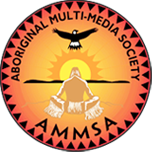Article Origin
Volume
Issue
Year
Page 3
Hobbema, Alta.
Hobbema's suicide rate only two years ago considered the highest in Alberta and possibly of any Indian band in the country, has been substantially reduced by 95 per cent in
the past two years.
Statistics released by Hobbema's Nayo-Skan Drug and Alcohol Counselling Service to Windspeaker show that from a statistical high of 17 suicides in 1987, Hobbema had four
suicides in 1988 and so far, one in 1989.
Comparably, in 1986 there were 14 suicides and eight in 1985. A special study commissioned by the four Hobbema Indian bands, Samson, Montana, Ermineskin and Louis
Bull, determined that the suicide rate for young Hobbema women was 160 times the national average in 1985 and 1986 while for men, it was 83 times the national average.
The study analyzed suicides in the four bands from 1980 to 1986.
For Clive Linklater, director of the Nayo-Skan program since January 1987, the decline in suicides in 1988 and 1989 demonstrate to him that suicides on the reserve hit their
peak in 1987. And the work of the program has had some significant impact in Hobbema in continuing to counteract that crucial social problem.
"We've had some real dramatic results as far as I'm concerned," declared Linklater, who attributed much of the statistical decline to the effectiveness of a suicide program which
operates out of the Nayo-Skan clinic.
The one to one counselling service reaches people who are suicidal or who have attempted suicide. In addition, the suicide intervention program puts staff on a 24 hour call
basis.
"So far in all the interventions we have had, there is not a single one where someone has gone on to commit suicide," said Linklater.
But with four suicides in 1988, Linklater says the network is not "airtight."
"Four of them slipped through," he noted.
Linklater says the suicide program takes people from their point of crisis in their life to a less stressful situation. "Once we get our finger in them, we don't let them go," said the
54 year old Saulteaux Indian from Counchiching near Fort Frances in northern Ontario.
Since 1980, 75 Hobbema Indians have committed suicide and another 154 others have died from alcohol-related illnesses or accidents.
However, the most recent statistics compiled by the clinic indicate that alcohol and drug related deaths have now dropped to eight in 1988 from a high of 54 in 1986 and 19 in
1987. Motor vehicle accident rates have also dropped significantly from a high of 19 in 1986 to two in 1988.
But Linklater remembers a time when people didn't care if they killed themselves by alcohol or reckless driving or suicide.
"We had to stop them from killing themselves," said Linklater. "So we decided to start backwards and take a very pragmatic approach."
That approach involved a comprehensive community approach to an alcohol and drug treatment program that made clients recognize that alcoholism and drug addiction is a
disease of the mind and the body.
"That's our basic belief and it affects other people's lives, from their intelligence, to how their organ's function, to their social lives," said Linklater.
"We treat it systematically. Now we've got it under control in two to three years, we want to reduce it down to zero."
Linklater maintains that the program's goal is to reach as many people in the community as possible with its alcohol and drug program.
"If you want to have an effective drug and alcohol program, you have to go to everybody," said Linklater, who hopes to implement a drug and alcohol program to the 115
programs operated by the four bands on the reserve.
He thinks that goal is possible.
As Linklater says: "For us, every day is drug and alcohol awareness day."
- 4423 views
